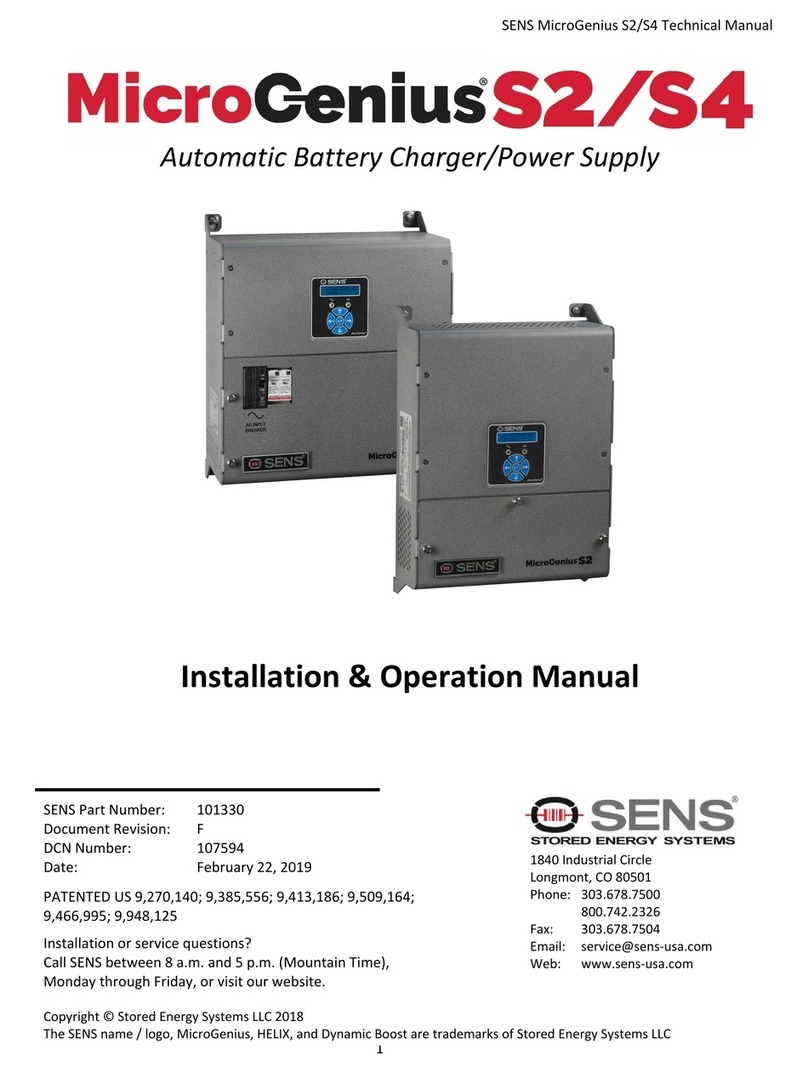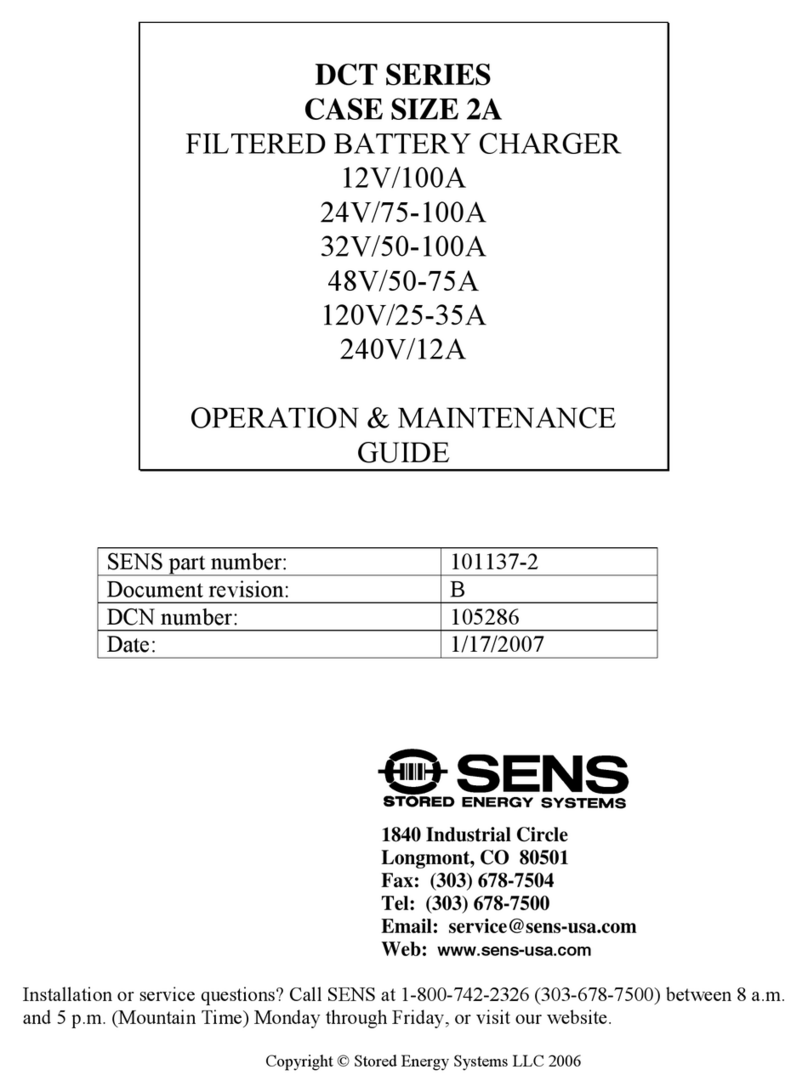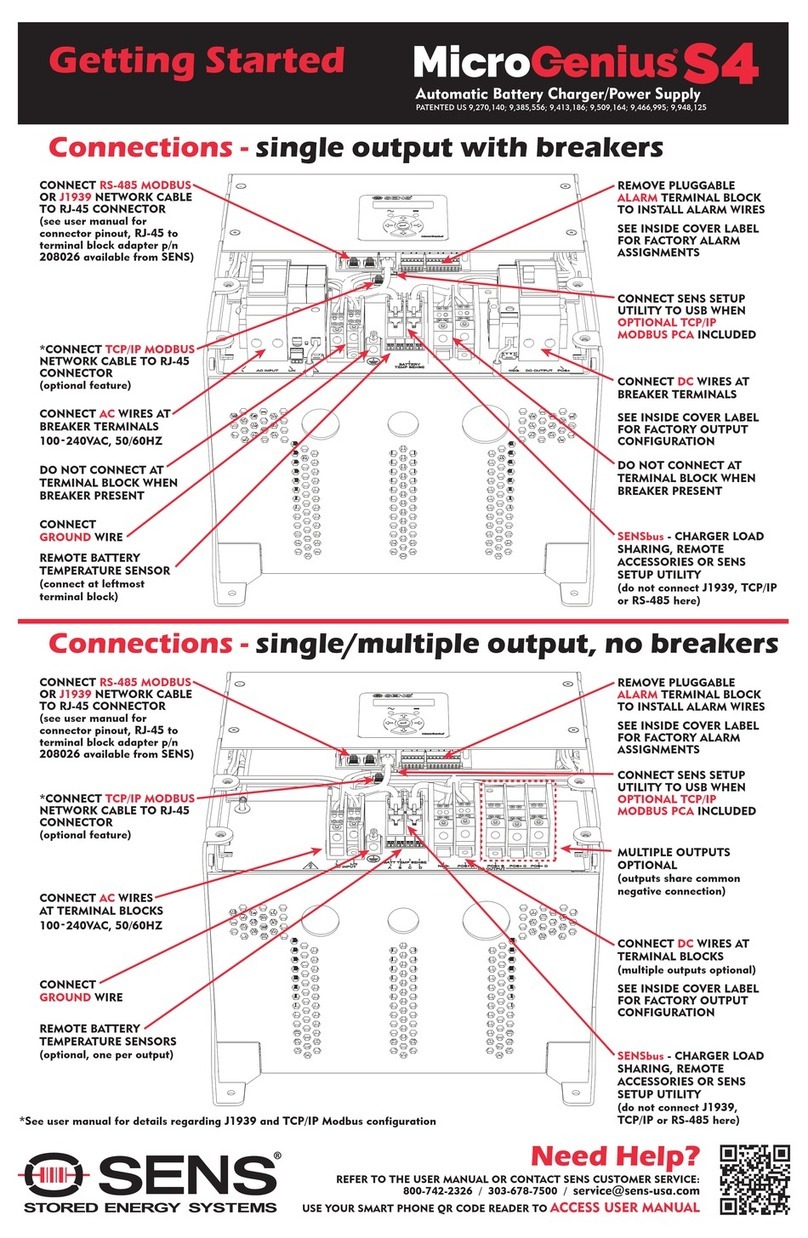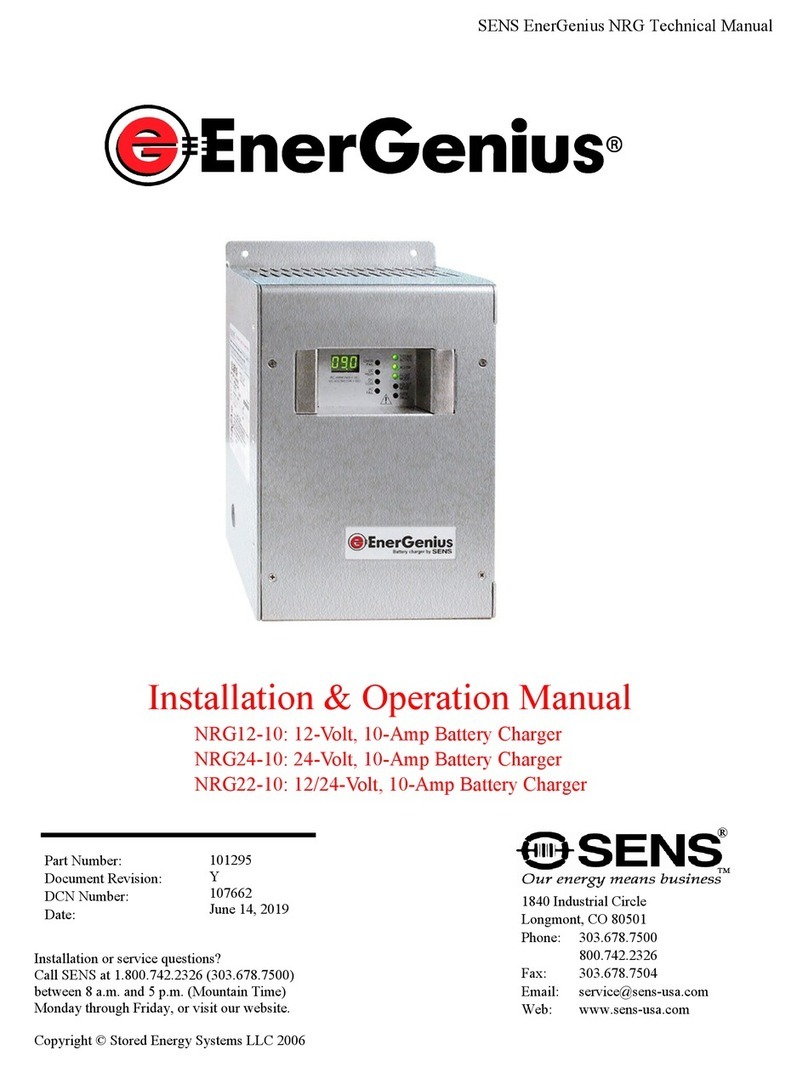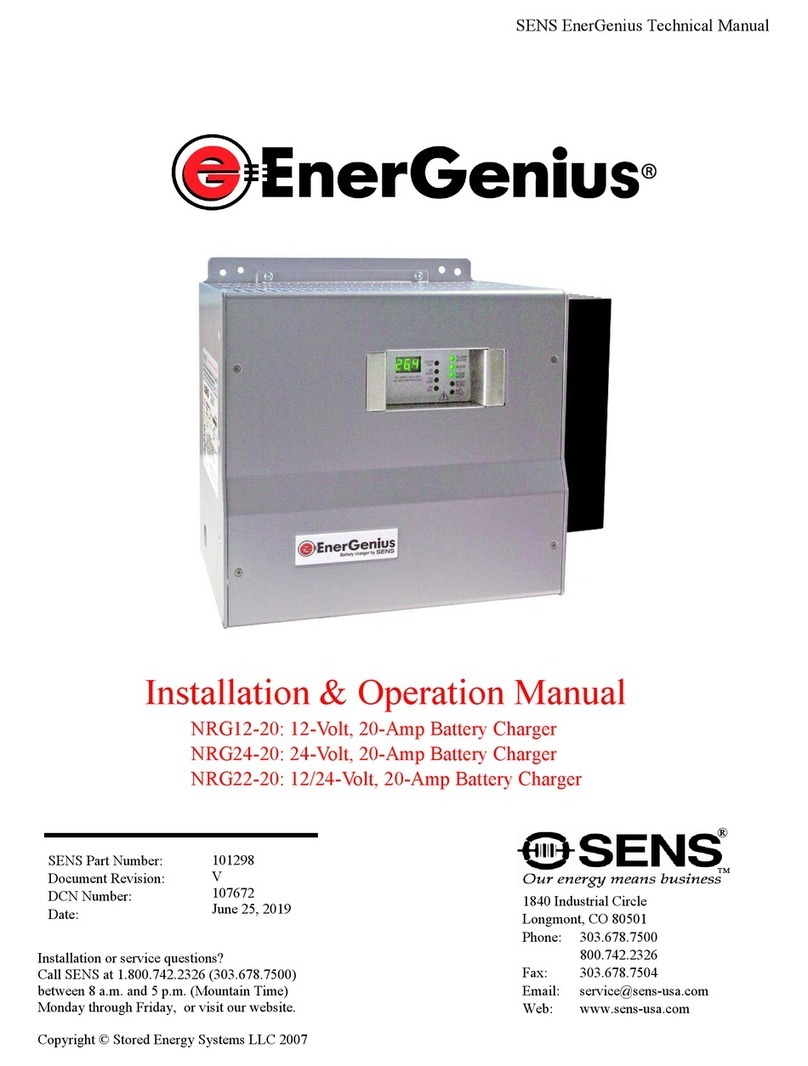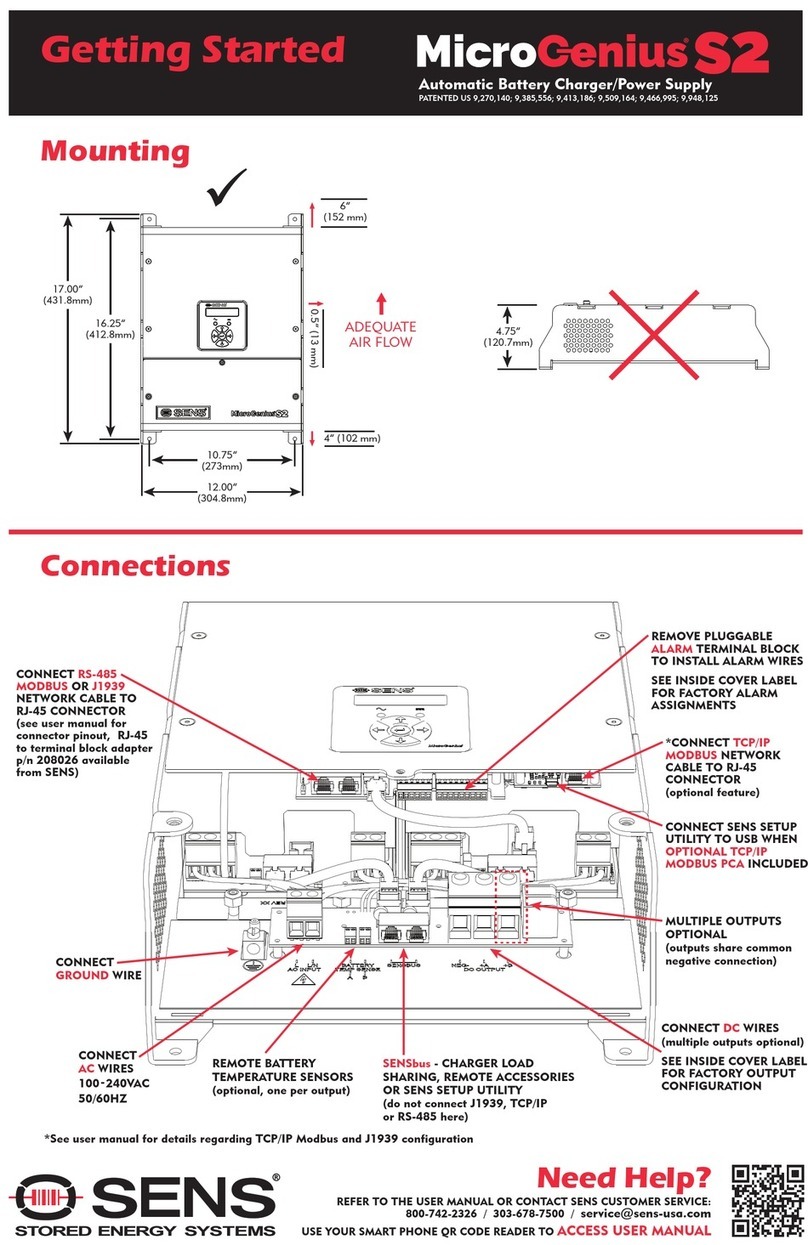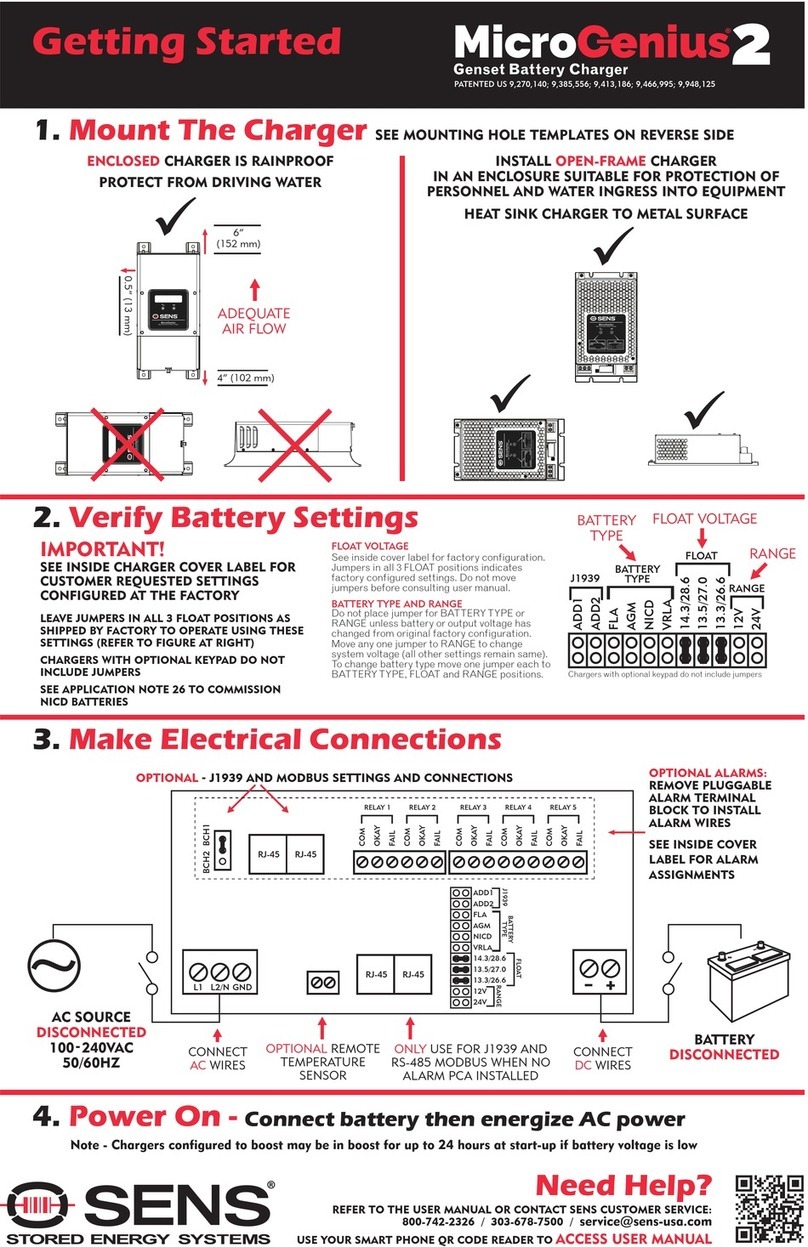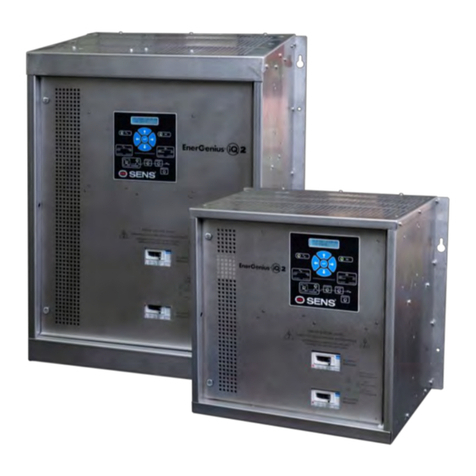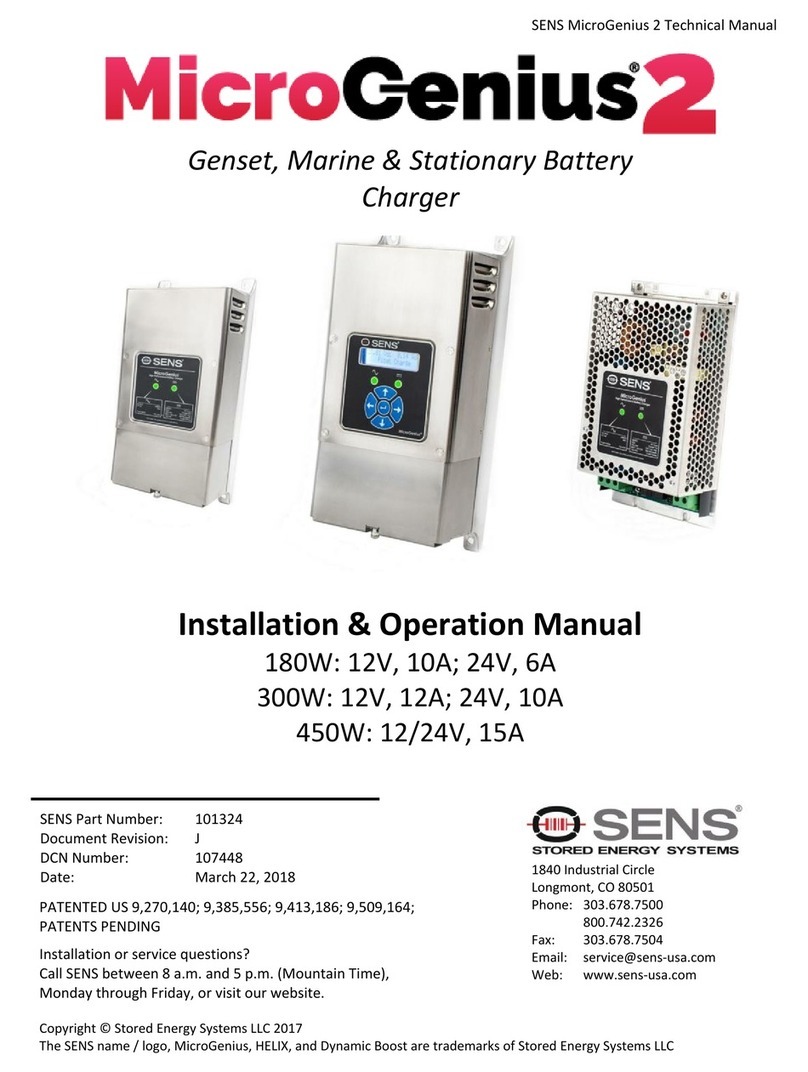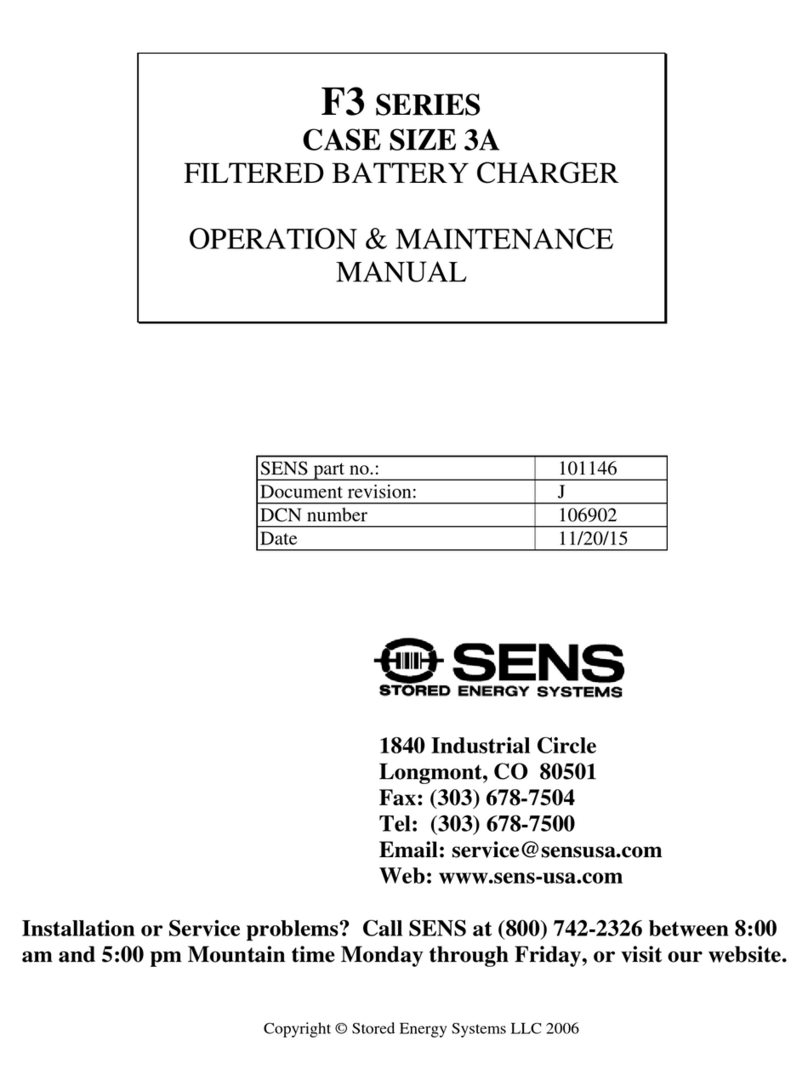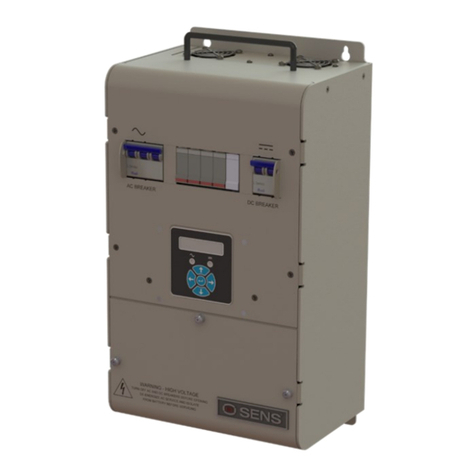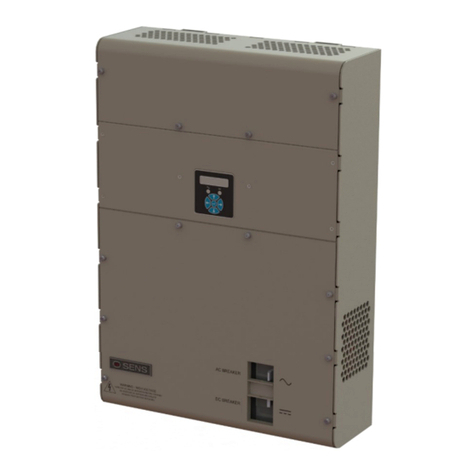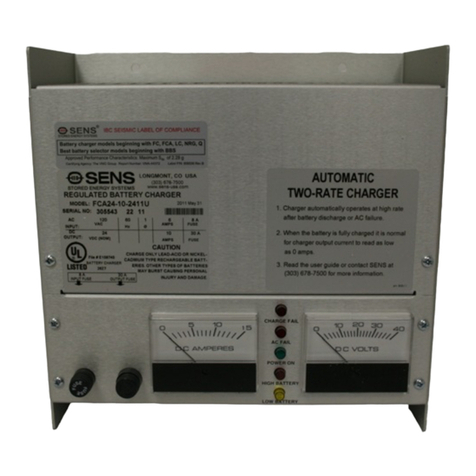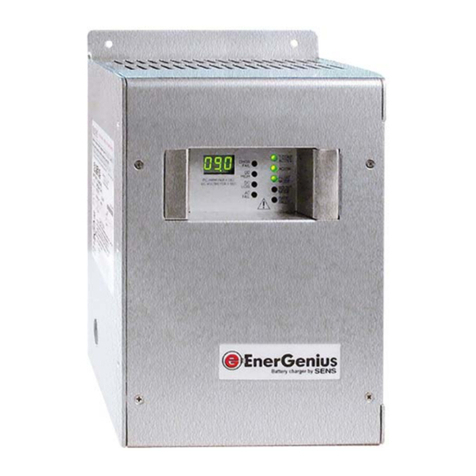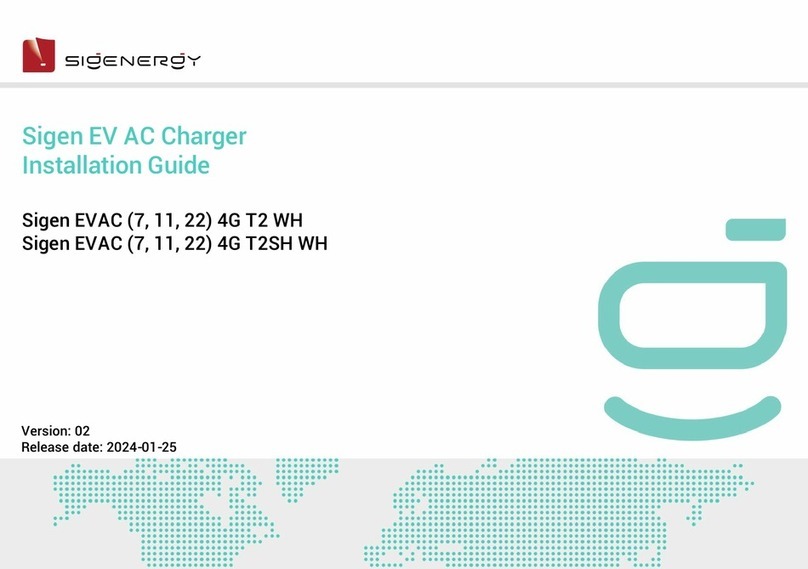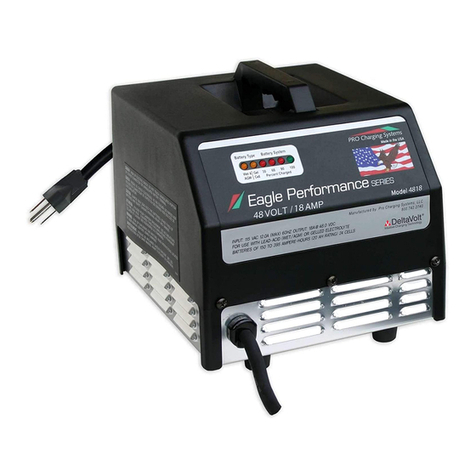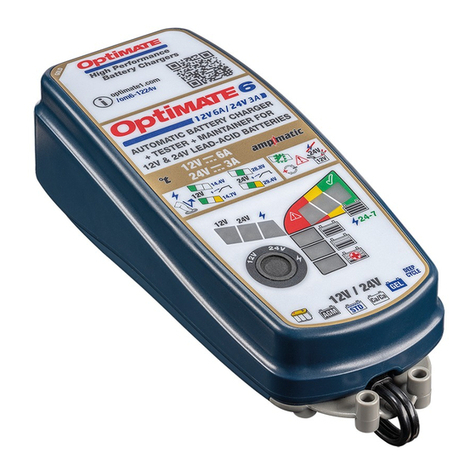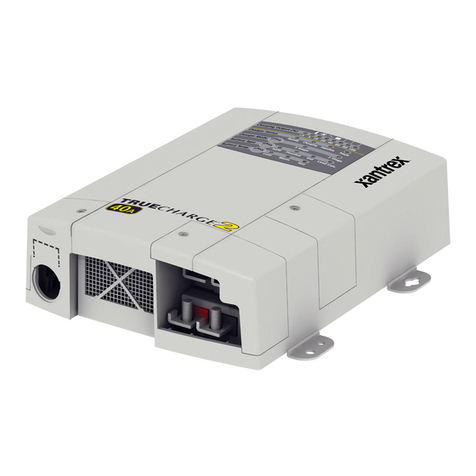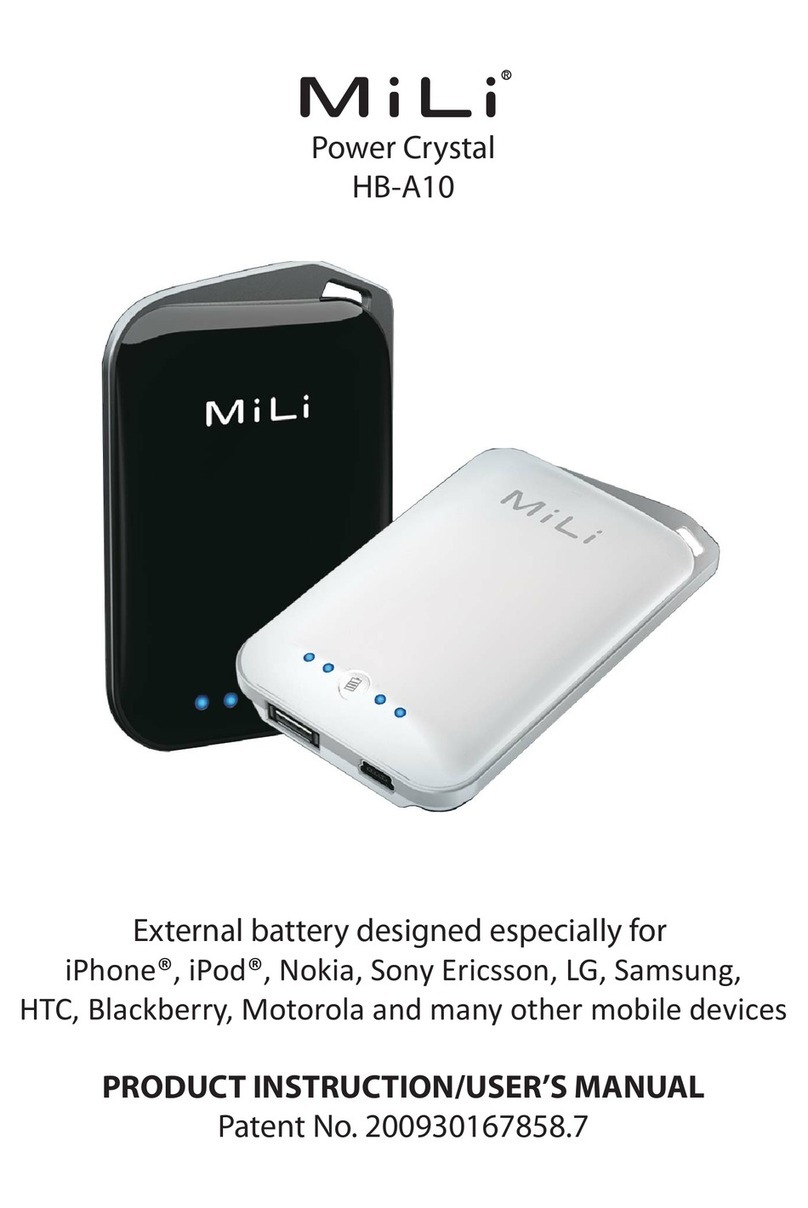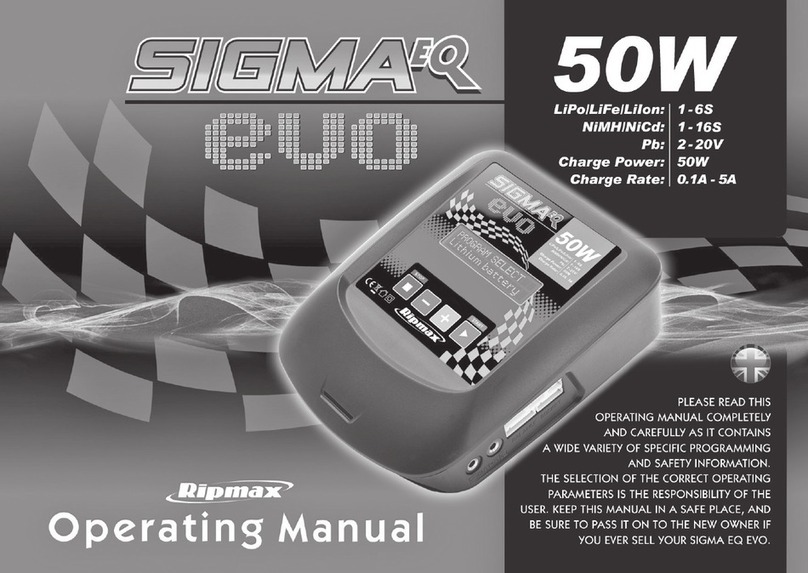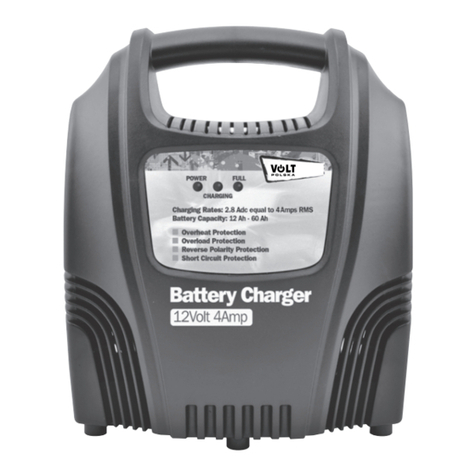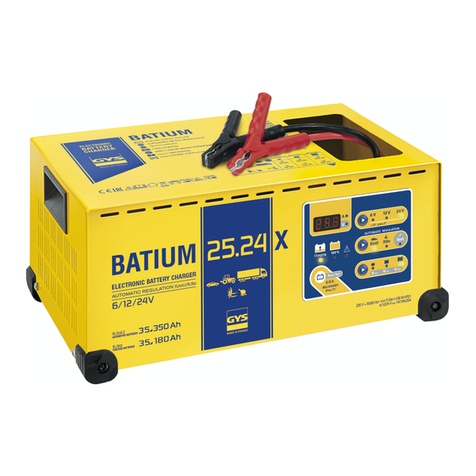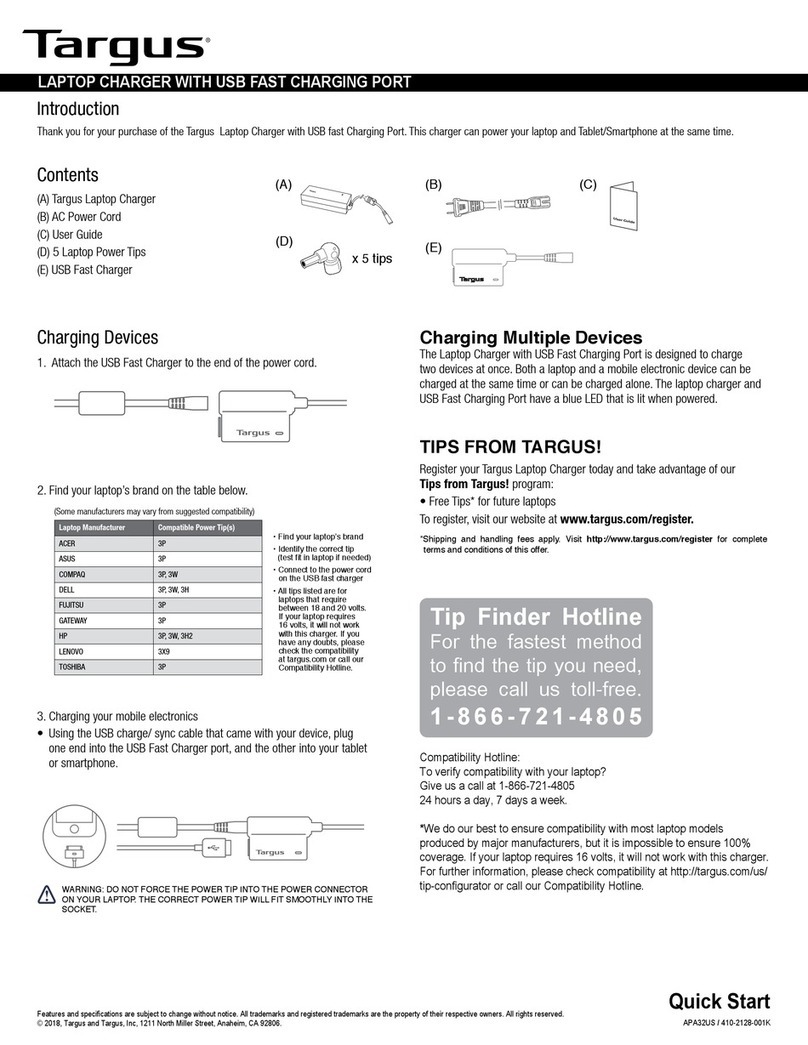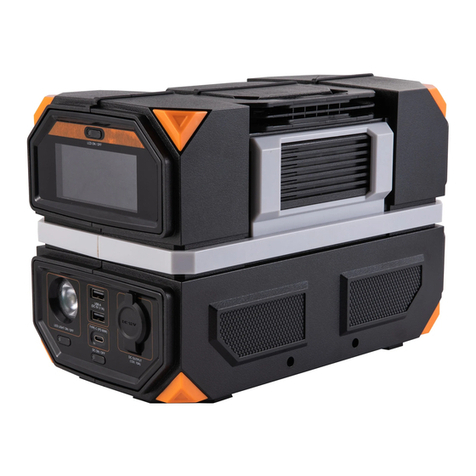
101148 Rev F Page 4of 6
Before connecting the AC leads, change the input voltage selection jumpers (if necessary) to the desired
voltage. The factory setting is for 240 VAC.
Connect your AC service to the terminal block.
The charger is shipped with the
correct fusing for 120 volt input. If configuring for 208 or 240 VAC input,
the fuse must be changed to a voltage rating of 250 VAC, and to the correct current rating.
Table 2.2 below shows the approximate input VA
and amperes required by each unit in the series, along with
recommended input fuse values.
The user is responsible for ensuring that a fuse of the correct voltage and current rating is used
in this charger. 125 volt rated fuses are satisfactory for 120 volt input. 250 volt fuses must be used when the
input selection is 208 or 240 VAC.
TABLE 2.2
Input Power Consumption
Output I/P 120 V 208 V 240 V
Current Fuse VA Curr. Fuse Curr. Fuse Curr Fuse
36/48 3 amps 6A 300 2.4 3A 1.6 2A 1.6 2A
36/48 5 amps 10A 499 4.0 5A 2.4 3A 2.4 3A
36/48 7 amps 15A 699 4.8 6A 3.2 4A 2.4 3A
60/72 3 amps 6A 434 4.0 5A 2.4 3A 2.4 3A
60/72 5 amps 10A 723 5.6 7A 4.0 5A 3.2 4A
60/72 7 amps 15A 1013 9.6 12A 4.8 6A 4.8 6A
84/120 3 amps 6A 707 8.0 10A 4.0 5A 4.0 5A
84/120 5 amps 10A 1179 9.6 12A 5.6 7A 4.8 6A
84/120 7 amps 15A 1650 12.0 15A 7.2 9A 6.4 8A
132/168 3 amps 6A 1044 9.6 12A 5.6 7A 4.8 6A
132/168 5 amps 10A 1739 16.0 20A 8.0 10A 7.2 9A
132/168 7 amps 15A 2435 20.0 25A 12.0 15A 9.6 12A
180/240 3 amps 6A 1369 12.0 15A 7.2 9A 6.4 8A
180/240 5 amps 10A 2282 20.0 25A 12.0 15A 9.6 12A
180/240 7 amps 15A 3194 26.0 30A 16.0 20A 16.0 20A
252 6 amps 15A 3328 N/A N/A 16.0 20A 16.0 20A
Battery Connection
Before making DC connections, correctly identify the positive an negative leads;
DO NOT CONNECT BATTERY BACKWARDS.
2.3 Alarm Connections
An auxiliary 120 VAC output is provided to drive an external “charger OK” indicator. The output is
rated at one amp. Make connections to TB7 pins 9 and 10 of the control as shown on drawing
SCH\00210.
2.4 Remote Temperature Sensor
The charger is equipped with a remote temperature sensor. THIS SENSOR IS AN INTEGRAL PART
OF THE CHARGER’S CONTROL CIRCUIT, AND MUST BE CONNECTED TO THE CHARGER IN
ORDER FOR IT TO OPERATE. When installing the charger fix the sensor in a place that is most
representative of the normal ambient temperature of the system battery. The sensor is non-polarized.










